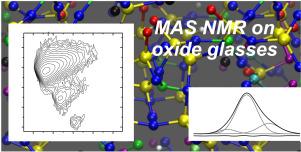Probing oxide-based glass structures by solid-state NMR: Opportunities and limitations
Abstract
This Primer critically reviews the possibilities and limitations of probing the short-range structure of an oxide-based glass by routine magic-angle spinning (MAS) or triple-quantum MAS (3QMAS) nuclear magnetic resonance (NMR) experiments. We briefly outline the structural features of oxide-based glasses and the basics of solid-state NMR. Besides suggesting guidelines for selecting favorable experimental conditions and important considerations for recording high-quality MAS NMR spectra amenable for subsequent analysis, we review options for extracting NMR observables and their distributions from spins-1/2 as well as half-integer spin quadrupolar nuclei. Considering that the isotropic chemical shift remains the primary probe of local structure by MAS NMR, we thoroughly review its dependence on the short-range oxide-based glass parameters from the viewpoint of a very simple and intuitive but qualitative model. The utility of deconvolutions of notably 29Si and 31P MAS NMR spectra are discussed critically. We also suggest alternative yet qualitative analysis options that are available whenever MAS NMR spectral deconvolutions are not warranted without additional information, which incidentally applies to a majority of modern multicomponent glasses.


 求助内容:
求助内容: 应助结果提醒方式:
应助结果提醒方式:


